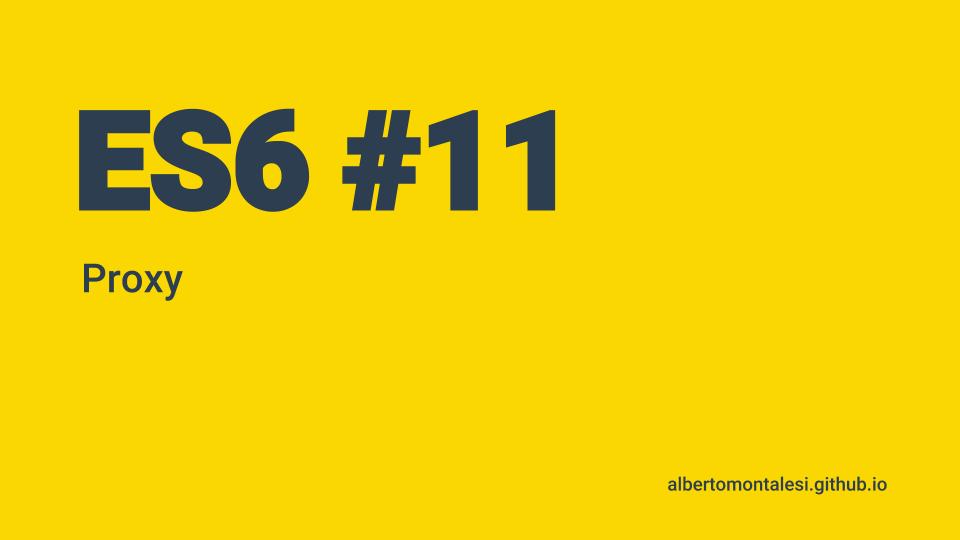JavaScript ES6 for Beginners #11: Proxies

What is a Proxy?
From MDN:
the Proxy object is used to define custom behavior for fundamental operations (e.g. property lookup, assignment, enumeration, function invocation, etc).
How to use a Proxy ?
This is how we create a Proxy:
var x = new Proxy(target,handler)
- our
targetcan be anything, from an object, to a function, to another Proxy - a
handleris an object which will define the behavior of our Proxy when an operation is performed on it
// our object
const dog = { breed: "German Shephard", age: 5}
// our Proxy
const dogProxy = new Proxy(dog, {
get(target,breed){
return target[breed].toUpperCase();
},
set(target, breed, value){
console.log("changing breed to...");
target[breed] = value;
}
});
dogProxy.breed;
// "GERMAN SHEPHARD"
dogProxy.breed = "Labrador";
// changing breed to...
// "Labrador"
dogProxy.breed;
// "LABRADOR"
When we call the get method we step inside the normal flow and change the value of the breed to uppercase.
When setting a new value we step in again and log a short message before setting the value.
Proxies can be very useful for example if your object is a phone number.
You can take the value given by the user and format it to match the standard formatting of your country.
This was the eleventh part of my ES6 for beginners course, check out the rest of them here.
You can also read this articles on medium, on my profile.
Thank you for reading.

Leave a Comment